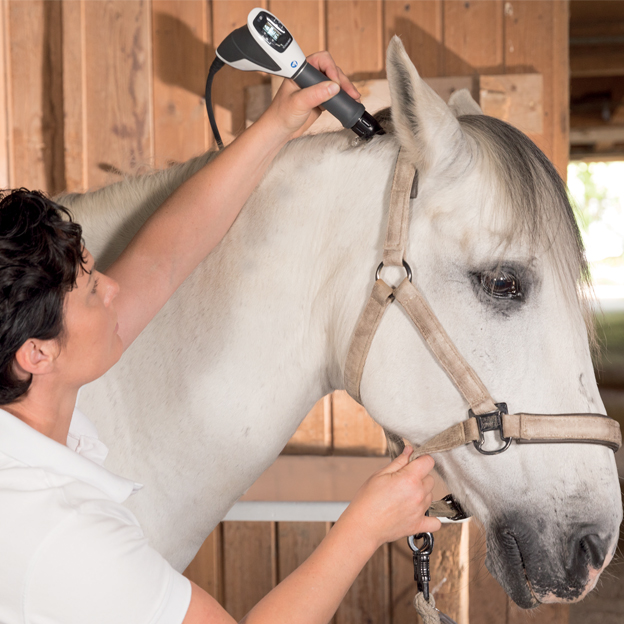Equine Therapy: Just How It Assists Build Self-confidence and Emotional Toughness
Equine Therapy: Just How It Assists Build Self-confidence and Emotional Toughness
Blog Article
Examining the Effectiveness of Laser Therapy in Horse Therapy for Injury Rehabilitation
The examination of laser treatment's effectiveness in equine injury rehab rests on several aspects, consisting of recovery time, pain reduction, and cells regrowth. Clinical research studies recommend remarkable enhancements in conditions like tendonitis and osteoarthritis, associated to boosted mobile feature and elevated ATP production. Veterinarians often observe remarkable end results with laser treatment contrasted to conventional methods, positioning it as a critical element in equine care. The requirement for constant tracking and personalized treatment plans can not be overstated. What particular medical evidence supports these claims, and how do veterinarians implement these protocols in practice?
Understanding Laser Treatment
Laser treatment has become a crucial device in veterinary medicine, specifically in the treatment of equine conditions. Recognized for its non-invasive nature and effectiveness, laser therapy involves the application of specific wavelengths of light to boost tissue repair and lower inflammation. This therapeutic method is progressively favored for its capacity to speed up the recovery process in horses struggling with a range of musculoskeletal injuries and persistent conditions.
The primary system behind laser treatment is its ability to boost cellular features. When laser light passes through the skin, it is taken in by mitochondria, the giant of cells, which leads to boosted manufacturing of adenosine triphosphate (ATP) This biochemical energy increase facilitates mobile repair work and regrowth. Furthermore, laser therapy advertises vasodilation, improving blood circulation and oxygen delivery to broken cells, hence accelerating recuperation.
In equine medication, laser treatment is particularly useful for problems such as tendonitis, osteo arthritis, and injury recovery. The strategy is admired for its pain-relieving homes, enabling equines to reclaim mobility and function more rapidly. Veterinarians also appreciate its marginal negative effects compared to various other therapy methods, making it a dependable and safe option for equine care.

How Laser Treatment Functions

Upon absorption, these photons cause a series of biochemical changes, boosting mitochondrial function and leading to raised adenosine triphosphate (ATP) manufacturing. This rise in ATP increases cellular metabolism, advertising tissue fixing and regrowth. Additionally, laser treatment modulates inflammatory responses by impacting cytokine levels and lowering oxidative anxiety, thereby relieving pain and swelling.
Another considerable aspect of laser therapy is its duty in improving microcirculation. The treatment promotes vasodilation, boosting blood flow and oxygen shipment to damaged tissues (Equine Therapy). This promotes the removal of mobile debris and sustains the spreading of fibroblasts and collagen synthesis, vital for wound recovery
Professional Evidence
The efficacy of laser therapy in equine treatment has been substantiated through various clinical studies, showcasing its therapeutic potential across a range of problems. A research performed by Turner et al. (2012) showed that equines treated with low-level laser therapy (LLLT) for tendon injuries exhibited increased recovery contrasted to those getting traditional treatments.
Similarly, study by Johnson and coworkers (2015) focused on equine muscle mass injuries, exposing that laser treatment considerably sped up muscular tissue fiber regrowth and reduced muscle mass stiffness. These findings were affirmed by histological analyses revealing better muscle cells organization. Medical analyses have actually shown that laser treatment can reduce persistent conditions such as osteoarthritis. A research study by Smith et al. (2018) reported that horses with osteoarthritic joints experienced remarkable pain alleviation and boosted variety of activity complying with a program of laser therapy sessions.
Veterinarian Insights

Veterinarians likewise appreciate the adaptability of laser treatment. It can be utilized for a wide variety of conditions, from superficial wounds to much deeper bone and joint injuries. Dr. Emily Brown highlights its energy in treating conditions like tendonitis and osteoarthritis, useful site where standard treatments usually drop brief. She mentions that laser therapy can be tailored to the specific demands of each steed, making sure ideal outcomes.
In addition, vets value the ability to incorporate laser therapy with other therapy modalities. This multimodal approach can boost general treatment effectiveness, offering a thorough remedy for equine rehabilitation. Such recommendations from experienced professionals emphasize the growing approval and application of laser therapy in equine medication.
Practical Considerations
A vital element of applying laser therapy in equine therapy includes understanding the functional considerations that ensure its efficacy and safety and security. Primarily, it is crucial to pick the appropriate laser tool, as various kinds vary in wavelength, power, and penetration deepness. Equine Therapy. Veterinarians need to be well-versed in these specifications to customize therapy protocols successfully per injury type
Additionally, the regularity and duration of laser therapy sessions require mindful planning to make best use of therapeutic benefits while decreasing any prospective damaging effects. Constant surveillance of the equine's action to therapy can guide required changes in the therapy regimen. Developing a safe and regulated environment during treatments is also necessary to protect against accidental websites exposure to laser emissions, which could hurt both the equine and the handler.
Training and accreditation of workers providing laser treatment are vital to make sure correct strategy and to maintain safety and security criteria. Furthermore, preserving precise records of each session, including laser settings and observed outcomes, is vital for evaluating the total performance of the therapy and for making data-driven decisions.
Conclusion
Laser click this site therapy has actually emerged as a reliable technique in equine injury rehabilitation, supplying considerable advantages in healing time, discomfort relief, and cells healing. For optimal results, continuous surveillance and personalized treatment methods stay essential in leveraging the full potential of laser therapy in equine treatment.
Report this page